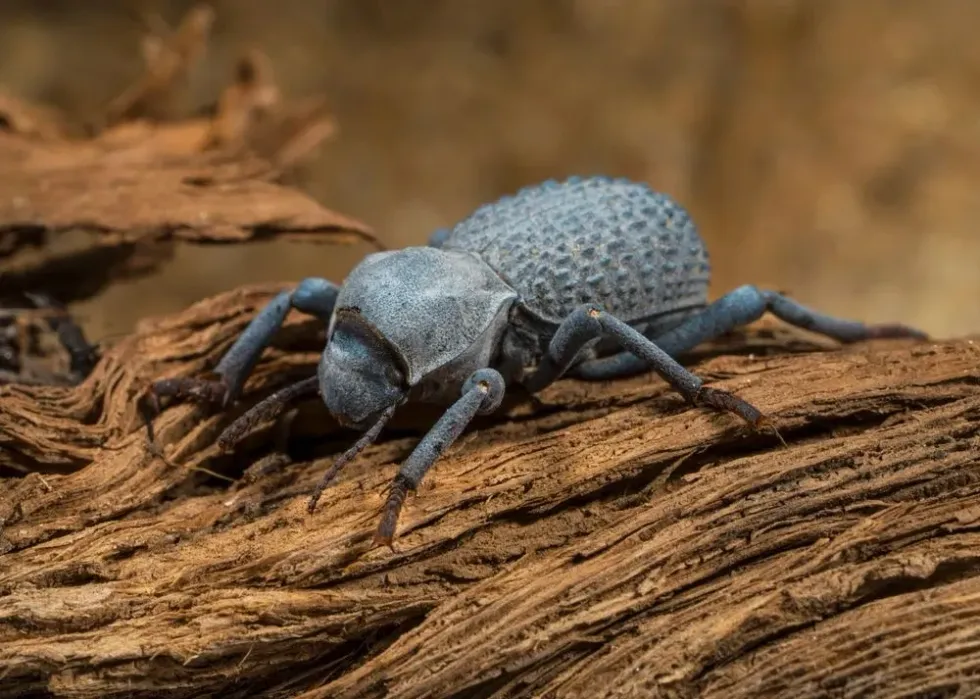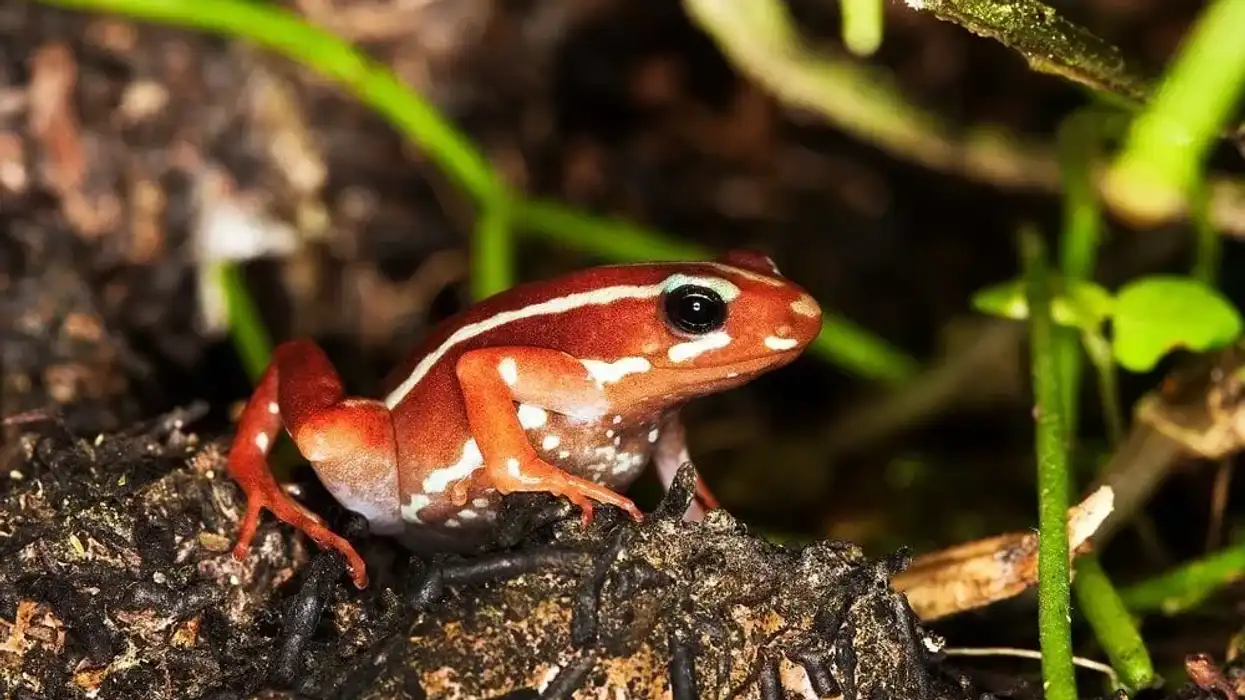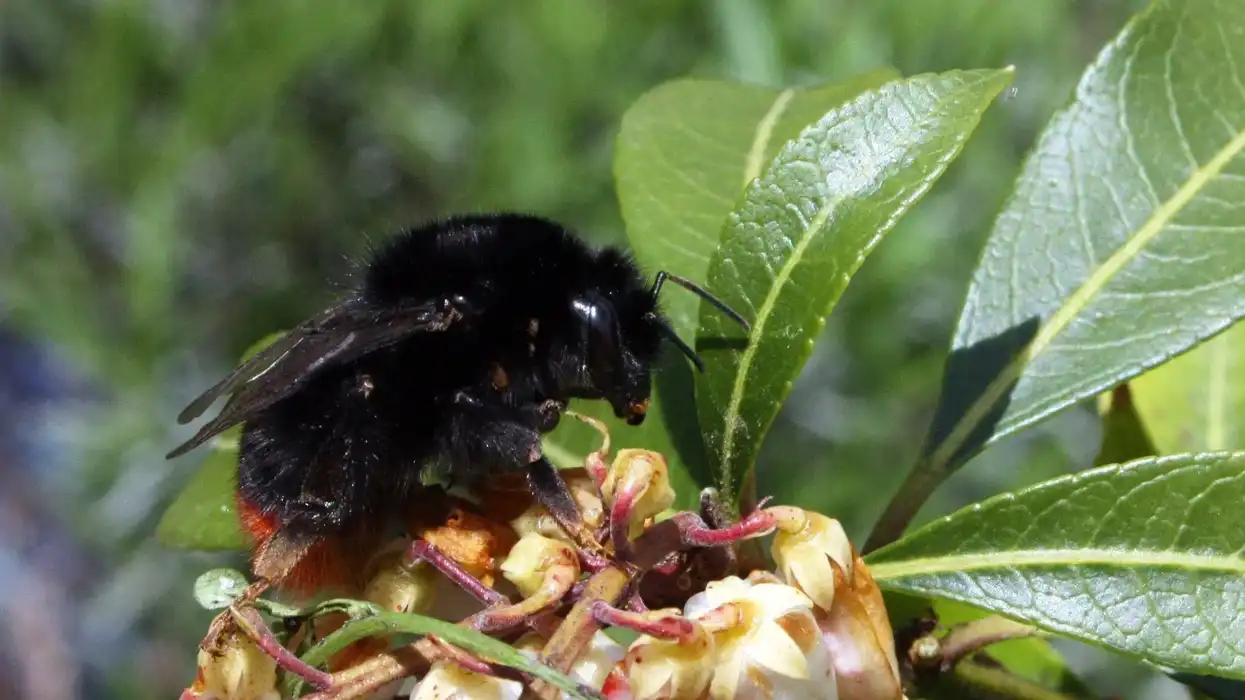The scientific name for the Blue Death feigning beetle is Asbolus verrucosus. They are desert beetles of the darkling species.
They are invertebrates of the family Tenebrionidae of the order Coleoptera. These desert-dwelling beetles are originally from the South-West United States, mainly the Sonoran desert. Gradually they have spread to surrounding countries like Mexico.
They are built to withstand the heat in dry regions. The beetles can survive in areas of high temperature and low humidity. Their thick hard exoskeleton has bumps or warts on the abdomen giving it an armor-like appearance.
The original black beetles turn bluish when their body secretes a wax-like substance to help store water in extreme heat and also prevent desiccation. In areas with high humidity, they can turn black again.
The main source of food for these insects is plants and dry-decaying animals. They get water from their food sources and can therefore survive without water sources for days.
In captivity, their diet consists of some fruits and small plants. These harmless insects cannot bite and also do not secrete any poisonous substance. That is a major reason why they are often kept as pets.
They are low maintenance and easy to care for and also live for many years. Many zoos keep these beetles and are practicing breeding them indoors. These beetles do not have any special defense mechanism.
Unlike most beetles, they do not secrete any foul-smelling substance to keep predators away. Instead, as their name suggests, they play dead to fool humans and other predators.
In this article, you will also learn more interesting facts like blue death feigning beetle care, blue death feigning beetle breeding, blue death feigning beetle lifespan, cool facts on blue death feigning beetle larvae, blue death feigning beetle habitat, blue death feigning beetle digging, blue death feigning beetle size, blue death feigning beetle age, blue death feigning beetle hardiness, blue death feigning beetle life cycle, blue death feigning beetle range, and information on how to keep blue death feigning beetle pet.
Read on to learn more about these amazing beetles and if you like this article then check out burying beetle facts and weevil beetle facts.
Blue Death Feigning Beetle Interesting Facts
What type of animal is a blue death-feigning beetle?
Blue death feigning beetles are desert beetles of the Tenebrionidae family of the order Coleoptera.
What class of animal does a blue death-feigning beetle belong to?
Blue death-feigning beetles belong to the class Insecta of the animal kingdom.
How many blue death-feigning beetles are there in the world?
This species of darkling beetle are native to the deserts of the Southwestern United States and some neighboring countries. The total number of these beetles currently living on the planet cannot be ascertained.
Where does a blue death-feigning beetle live?
Blue death-feigning beetles are mostly found in the desert regions of the Southwestern United States. The South-West United States includes Arizona, New Mexico, and portions of some states like Oklahoma, Nevada, California, Utah, Texas, and Colorado. These beetles are easily spotted in neighboring countries like Mexico.
What is a blue death feigning beetle's habitat?
The black-blue death feigning beetle is found in the desert and is built to withstand the harsh and dry conditions prevalent in these regions. The beetles can withstand the harsh climatic conditions of deserts and are suited to live in areas with high temperatures, low vegetation, and scanty rainfall.
Who do blue death-feigning beetles live with?
Blue death-feigning beetles are communal insects. Although they are not always seen in groups throughout the day when they are looking for food, these insects can live in groups. They are often kept together with other beetles in captivity and are not known to cause any problems.
How long does a blue death-feigning beetle live?
The blue death-feigning beetle, Asbolus verrucosus, is known to live for about eight years in the wild. However, in some cases, these beetles have been seen to survive longer in captivity. It is known that one such beetle lived for about 17 years.
How do they reproduce?
Not much research has been done on the process of reproduction in the blue death-feigning beetles. However, it is known that most beetles, including scavenger beetles, reproduce by laying eggs.
The males and females of the species mate and the female beetles lay their eggs which hatch after some days and the young ones emerge out of those eggs.
One important thing that has been noticed is how the female beetles lay their eggs close to a food source. The reason behind this is to provide food and nutrients to the larvae so they do not have to search for their food.
What is their conservation status?
The conservation status of the blue death feigning beetles is Not Listed under the International Union for Conservation of Nature or IUCN Red List.
Blue Death Feigning Beetle Fun Facts
What do blue death-feigning beetles look like?

The Blue Death feigning beetles are native to the deserts. They are sizeable insects that range in size from 0.70-0.82 in (18-21 mm) and have a thick exoskeleton.
The harmless beetles secrete a wax-like substance that gives them a bluish color. The wax secreted from their bodies helps prevent water loss and desiccation in hot and dry environments. Blue death-feigning beetles have a pair of antennae and tiny legs.
How cute are they?
The blue death-feigning beetles are often kept as a pet by breeders or young children. These insects are easy to keep and are interesting to watch as they move about inside the glass containers where they are kept. So, yes, they can make cute pets.
How do they communicate?
Not much research has been done on how death-feigning beetles communicate. However, we do know that they are sensitive to the vibrations in their environment.
Also, since they are beetles, we can assume that they communicate the same way as most beetles. For most beetles, they communicate through the secretion of pheromones. These pheromones are only detectable by other members of the species.
How big is a blue death-feigning beetle?
Blue death-feigning beetles are about 0.70-0.82 in (18-21 mm). These insects are almost 7-8 times smaller in size as compared to the Titan beetles (6.6 in or 167.64 mm) which are one the largest beetles in the world.
How fast can a blue death-feigning beetle run?
Blue death-feigning beetles are adapted to the heat. They are most active at dawn and dusk. These are slow-moving creatures that roam around in the hot sand looking for food.
How much does a blue death-feigning beetle weigh?
The exact weight of this species is not known. However, since they are small insects that can easily be crushed, it can be assumed that they do not weigh much.
What are the male and female names of the species?
The males and females of this beetle species are not known to have distinct names.
What would you call a baby blue death-feigning beetle?
Baby blue death feigning beetle are called larvae.
What do they eat?
The main source of food for these insects is plants, fruits, insects like crickets, and animal debris. They are scavengers who roam about in the hot and dry sand of deserts looking for food.
Are they dangerous?
Blue death-feigning beetles are not dangerous at all. They are non-poisonous and do not bite or secrete any foul liquid.
Would they make a good pet?
These beetles are known to make excellent pets. They are easy to keep as they pose no threat and are easy to care for and need very little maintenance. These beetles are usually kept in big glass boxes with a sand substrate.
The walls of the glass containers are slippery so the beetles cannot climb out of the container. The blue death feigning beetle tank mates can comprise other species of beetles and some ants. They are communal insects.
Did you know...
The blue death-feigning beetles go through a process of complete metamorphosis. They hatch out of eggs laid by the female members of the species. Beetles gradually grow out of the larvae stage and after going through a complete metamorphosis, reach the adult stage where they look different.
Where does a blue death-feigning beetle get its shell color from?
Blue death feigning beetles are black. They are native to environments that record high temperatures and are well-suited to survive in those harsh conditions.
The bluish color of the shell comes from a wax secreted by these insects. The purpose of the wax is to help store water in the body and prevent desiccation. In areas with high humidity, their color might change back to black.
Why does a blue death feigning beetle's defense mechanism help it survive?
Blue death-feigning beetles are not capable of secreting foul-smelling liquids to keep away predators. They do not have any special defense mechanism.
Instead, these animals can fake or feign their death. That is also how they get their name.
They sense danger or see a predator approaching or feel threatened in any way, they instantly fake their death. They roll onto their backs and throw their tiny legs up in the air and play dead. This is to trick predators or humans to think that the creature is lifeless or dead.
They can stay still or motionless for hours till they are sure that the threat is well gone. Most predators prefer live prey and once these beetles have sensed that the predator is gone and they are in no danger, they get back on their feet and continue on their way.
Here at Kidadl, we have carefully created lots of interesting family-friendly animal facts for everyone to discover! Learn more about some other arthropods from our Christmas beetle facts, or bombardier beetle facts.
You can even occupy yourself at home by drawing one on our Blue Death coloring pages.










